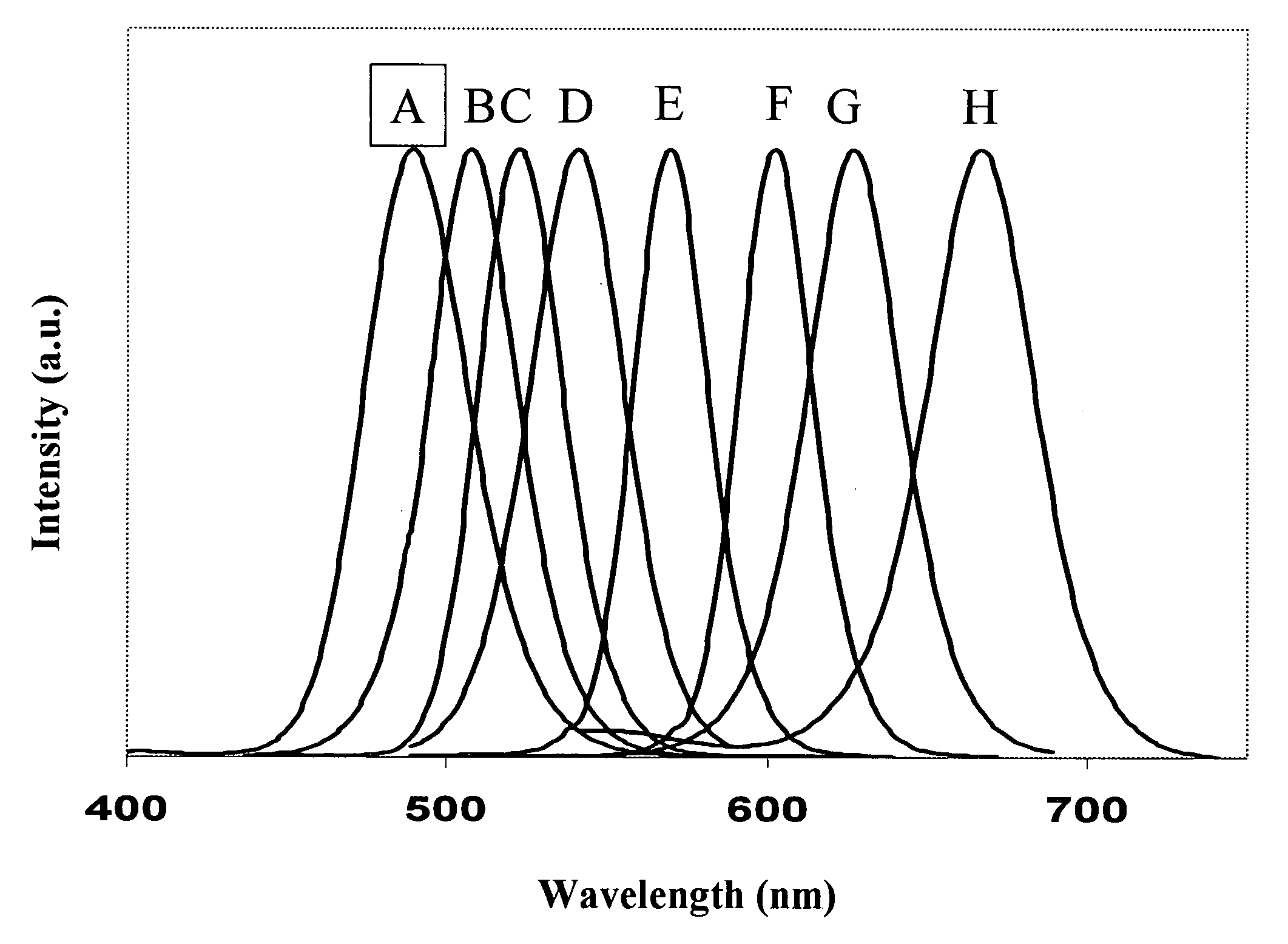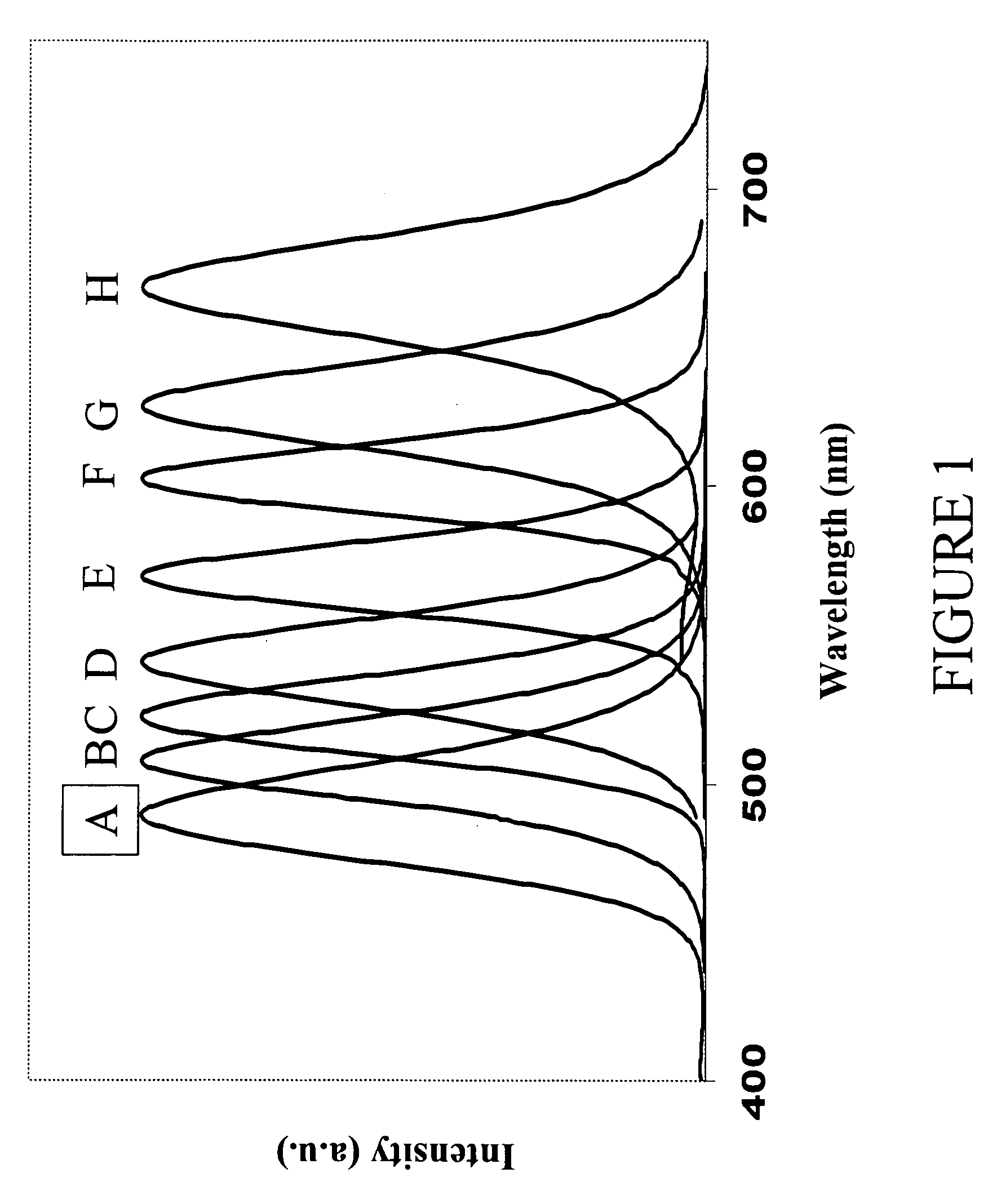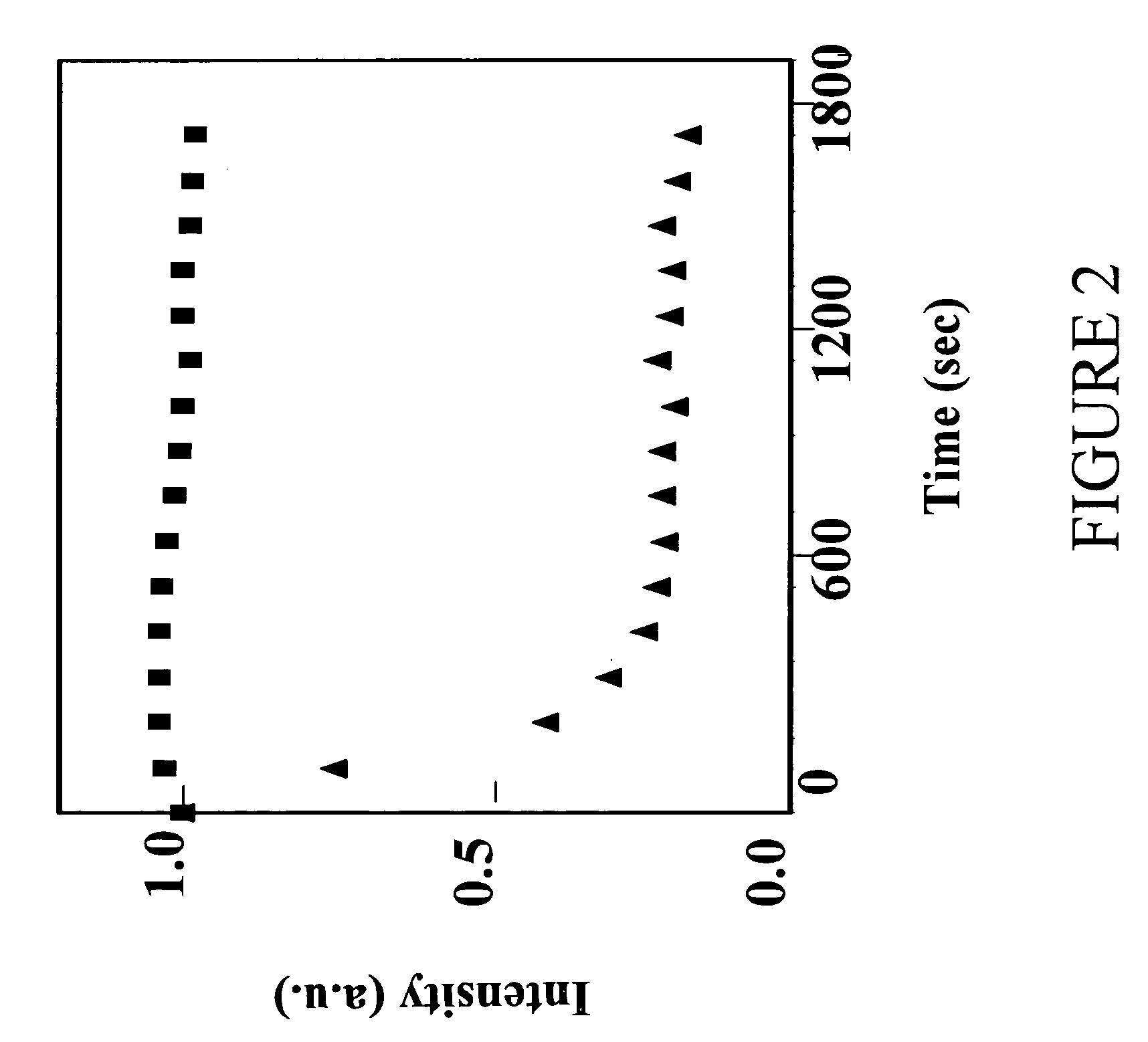Alloyed semiconductor nanocrystals
a technology of semiconductor nanocrystals and alloys, which is applied in the direction of instruments, non-metal conductors, oxide conductors, etc., can solve the problems of wide emission spectrum, unusually difficult to stop the reaction at the right time and/or quickly enough, and not as sensitive or stable as non-isotopic detection systems that utilize luminescent semiconductor quantum
- Summary
- Abstract
- Description
- Claims
- Application Information
AI Technical Summary
Benefits of technology
Problems solved by technology
Method used
Image
Examples
example 1
Core Synthesis
[0100] Octadecene (4.00 mL) was mixed with oleic acid (200 μL) and added to CdO (0.1 mmol) in a three neck round bottom flask. The flask was flushed with 99.999% nitrogen for 20 minutes and then heated to 300° C. until the solution was clear. Stock solutions of selenium and sulfur were prepared in a glove box under 99.999% nitrogen. Selenium powder (1.00 g) was mixed with tributylphosphine (10.00 mL) and sulfur powder (0.40 g) was mixed with octadecene (20.00 mL). 20 μL selenium precursors were mixed with 1.2 mL sulfur precursors in a 20 mL glass vial, diluted to 2.00 mL with octadecene, and then added to the cadmium precursors via a needle syringe (with injection taking less than one second) and stirred for 60 minutes, or until no change in emission wavelength was observed. This produced cores that fluoresce at 525 nm.
Purification
[0101] The entire core solution was added to a 50 mL conical centrifuge tube and 10 mL of hexanes and 30 mL of butanol were added. The ...
example 9
[0103] In a similar way, CdSxSe1-x alloyed semiconductor nanocrystals were prepared using varying ratios of S:Se where the value of x in the resulting CdSxSe1-x alloyed semiconductor nanocrystals ranged from 0.15 to 0.84. FIG. 1 shows the emission spectra of the resulting CdSxSe1-x alloyed semiconductor nanocrystals. The values of x and the resulting wavelengths for samples A through H were as follows: A: x=0.84, wavelength=490 nm; B: x=0.80, wavelength=510 nm; C: x=0.76, wavelength=523 nm; D: x=0.71, wavelength=545 nm; E: x=0.60, wavelength=575 nm; F: x=0.05, wavelength=600 nm; G: x=0.35, wavelength=630 nm; and H: x=0.15, wavelength=665 nm.
[0104] The data from Examples 2-9 can be graphed to provide a calibration curve to determine the proper fraction of selenium and sulfur for the desired wavelength by plotting emission maximum on the X-axis and selenium fraction on the Y-axis.
[0105] The examples have been provided for crystals comprising Cd, Se, and S, but one skilled in the art...
example 10
[0106]FIG. 2 provides the results of a photostability comparison of alloyed nanocrystals prepared according to the present invention and nanocrystals made by a conventional method (commercially available). Both nanocrystal samples were illuminated by a UV light source and emission spectra intensities were measured at the indicated time intervals. The two nanocrystal samples have the same emission wavelength at 525 nm. The intensity values were then plotted against the illumination time. Squares (▪) represent nanocrystals prepared according to present invention. Triangles (▴) represent commercially available nanocrystals.
PUM
| Property | Measurement | Unit |
|---|---|---|
| Temperature | aaaaa | aaaaa |
| Temperature | aaaaa | aaaaa |
| Fraction | aaaaa | aaaaa |
Abstract
Description
Claims
Application Information
 Login to View More
Login to View More - R&D
- Intellectual Property
- Life Sciences
- Materials
- Tech Scout
- Unparalleled Data Quality
- Higher Quality Content
- 60% Fewer Hallucinations
Browse by: Latest US Patents, China's latest patents, Technical Efficacy Thesaurus, Application Domain, Technology Topic, Popular Technical Reports.
© 2025 PatSnap. All rights reserved.Legal|Privacy policy|Modern Slavery Act Transparency Statement|Sitemap|About US| Contact US: help@patsnap.com



